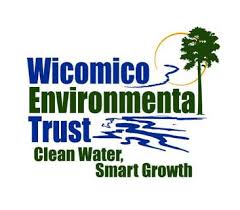
Of 5 Parameters Sampled for, 3 Remained Mostly Unchanged from 2017, While Chlorophyll a Was Elevated Across the Watershed Due to Algae Blooms. All 22 Sites Tested Had Fecal Bacteria Levels Above the Safe Swimming Threshold at Least Once During the Sampling Season
SALISBURY, MD AUGUST 8, 2019 – The Wicomico Environmental Trust (WET) and its Wicomico Creekwatchers announce the release of the 2018 Wicomico River Health Report, prepared in collaboration with Salisbury University. With generous funding through the City of Salisbury, Wicomico County, Salisbury University, the Community Foundation of the Eastern Shore, numerous sponsorships from local residents and businesses and thousands of hours per year of volunteer time, the WET Creekwatchers annual report analyzes over 400 water samples taken throughout the year from the Upper and Lower Wicomico River, Wicomico Creek, and several upstream ponds in the Watershed. More than 20 trained citizen-scientists give freely of their time to take water samples at regular two-week intervals from 22 locations in the watershed from March to November.
Water quality parameters measured are Total Nitrogen (TN), Total Phosphorus (TP), Water Clarity, Chlorophyll a, and Fecal Enterococci bacteria. Sample analysis is conducted by SU faculty and students at Salisbury University and the Horn Point Laboratory of the University of Maryland Center for Environmental Science (UMCES).
The 2018 Health Report highlights both improvement in some areas and declines in others.
Total Nitrogen (TN) – In the Upper Wicomico, annual averages improved significantly following a ten-year trend of improvement. Values at other locations were not significantly different from 2017. High Nitrogen sites remained at 2, and were both ponds.
Total Phosphorus (TP) – throughout the Watershed, annual averages were either slightly worse or unchanged. The only healthy location was Coulbourne Mill Pond.
Water Clarity – slightly improved over the previous year but the number of healthy sites decreased to 2.
Chlorophyll a – Levels worsened for all areas of the Watershed, most significantly in the Upper River and the Ponds. This continues a ten-year worsening trend and is fueled by heavy rains in the Spring and warmer temperatures in the summer leading to algal blooms. In 2018, no site in the Watershed was in the healthy range. 2018 saw the highest levels in all but the Lower Wicomico for the 13 years Creekwatchers has been collecting data.
Fecal enterococci bacteria – levels were mixed across all sites. Two sites (Wikander and Sharps Point) were ranked very poor, with a high swimming risk. Every site in the Watershed tested unsafe to swim at least once during the testing season.
“Good data is crucial to solving any problem. It’s my hope that this robust dataset lays the groundwork for sound growth and environmental policies at the State, County and municipal levels as well as increased awareness and behavior change on the part of Wicomico residents and businesses. With that, one day soon, we’re going to be able to go swimming in our River, creeks and ponds just like our parents and grandparents did without the fear of becoming sick” said WET President Dave Layfield.
“The results of this year’s report are a bit of a mixed bag, but, over time, we are seeing progress in the Wicomico River, and we are seeing progress in the Bay,” said Mayor Jake Day. “The data collected by the Creekwatchers informs everything from grant applications to policymaking, so the work they do is tremendously important. Salisbury is grateful for their diligence and stewardship.”
While the data in this report represents many different parameters with broad geographical and time distribution, WET is planning to expand the Creekwatchers program further over the next 2 years. WET is currently working on a Chesapeake Bay Trust (CBT) grant application (partially funded through Salisbury’s Storm Water Utility) to fund the expansion of the program to include hand-held field equipment to test for dissolved oxygen, a new web site and social media presence to provide water quality data to the public in near real time and administrative steps necessary to achieve EPA level certification of the program.
The report is available online at [web address] or you can find a print version at local businesses, the Library and the Government Office Building.




